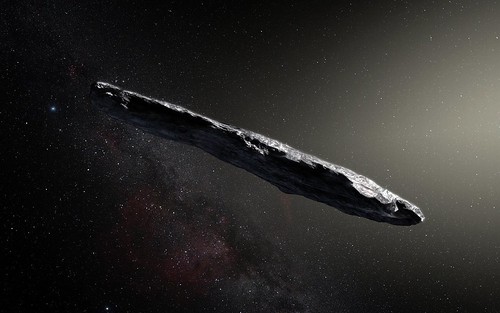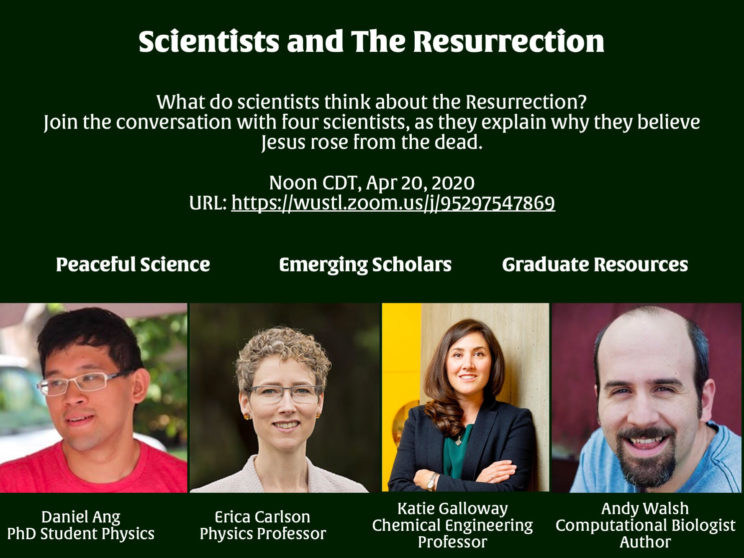
 )
)I promised some science of a less immediately relevant nature, so here we go. You may recall the story of ‘Oumuamua (more formally, 1I/2017 U1), an object which briefly visited our solar system in October of 2017. It was the first time we observed something from outside the solar system pass by, an exciting development all by itself. Even more remarkably, it had an unexpected shape and some surprising moves. Where most objects in space tend towards the spherical, ‘Oumuamua was oblong. And where gravity generally explains how those objects move, this one shifted around in ways that suggested other forces were also involved. Could it have been a spacecraft? The possibilities for spacecraft are limited largely by our willingness to ascribe advance technologies to their makers, so we could easily imagine a ship that fit the bill. Trickier is imagining an explanation in terms of what we know about space rocks, but this week brings a paper offering just such an explanation.
A model for forming objects like ‘Oumuamua needs to explain the shape and motion, at least in general features. The motion could be explained by vaporized material jetting out, not all that different from how our own spacecraft modify their trajectory. Ice turning into steam due to proximity to the sun would be a convenient source for such jets, but from what we could observe the surface was rocky rather than icy. Still, that doesn’t mean there couldn’t be ice or another source of gas jets under the surface. How would you get ice below the surface but not on it? Possibly by passing very close to the star on the way out of whatever system you came from, so everything on the surface got heat blasted away. And conveniently, such a close encounter could provide the asymmetrical forces necessary to yield an oblong shape. And so this newly proposed model of how an object like ‘Oumuamua could have formed involves getting very near to a star.
Now, I have limited ability to rigorously review the math involved or assess the plausibility of the scenarios. Beyond the appeal of keeping up with the conversation on the possibility that we were visited by extraterrestials (or maybe just their probe), I thought it was an interesting follow up to last week’s look at modeling celestial motion. Our models have progressed from not being able to simulate our own solar system (with fewer planets, since we didn’t know about Uranus, Neptune or Pluto in Newton’s day) without invoking divine intervention to simulating the formation and dynamics of objects we didn’t even know existed a few years ago. And not just simulating their motion under gravity, but also thermal effects on their composition.
And any time we get into possibilities of artificial objects and having to infer from the object itself how it was made and whether a ‘who’ was involved, we venture into watchmaker analogy territory. If you saw an oblong object with non-gravitational acceleration lying on a beach, would you think there was an oblong-object-maker? Obviously I don’t have a definitive answer in this case, and likely neither does anyone else. Which opens up more possibilities for discussion; without obvious answers, there is more opportunity to dig into methods and assumptions. Maybe you’ll find it to be a useful example.
Next Monday, April 20th at 1pm EDT I’ll be a panelist with several other scientists talking about why we believe in the resurrection of Jesus. The link to the webinar is in the image below; I hope you can join us for a fun conversation! (Edit: For security reasons, the Zoom link in the image has been invalidated. You can watch via Facebook: https://www.facebook.com/peacefulscience.org/ or register for the Zoom meeting here: https://wustl.zoom.us/meeting/register/tJEvfu6tqjwiHN3l-csUo6INMXmIqNCLuWBI)

Andy has worn many hats in his life. He knows this is a dreadfully clichéd notion, but since it is also literally true he uses it anyway. Among his current metaphorical hats: husband of one wife, father of two teenagers, reader of science fiction and science fact, enthusiast of contemporary symphonic music, and chief science officer. Previous metaphorical hats include: comp bio postdoc, molecular biology grad student, InterVarsity chapter president (that one came with a literal hat), music store clerk, house painter, and mosquito trapper. Among his more unique literal hats: British bobby, captain’s hats (of varying levels of authenticity) of several specific vessels, a deerstalker from 221B Baker St, and a railroad engineer’s cap. His monthly Science in Review is drawn from his weekly Science Corner posts — Wednesdays, 8am (Eastern) on the Emerging Scholars Network Blog. His book Faith across the Multiverse is available from Hendrickson.

Leave a Reply